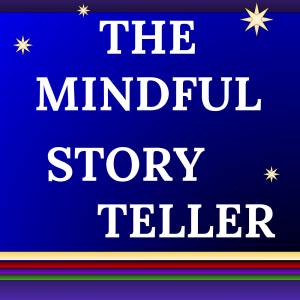
“Let us go forth, the tellers of tales, and seize whatever prey the heart long for, and have no fear. Everything exists, everything is true, and the earth is only a little dust under our feet.” – William Butler Yeats, The Celtic Twilight, p. 7.
∞∞∞∞∞∞∞∞
Storytelling is an act of fearlessness. To bring story to life is to see beyond the barriers of the so-called “agreed upon reality.” You invite listeners to fly above the limited evidences of their five basic senses; you inspire them to trust some subtler sense.
Their eyes are not really seeing your Aunt Mabel as you speak of her. Their noses can not really smell that fish that you describe frying in the pan. And if your tales move in the direction of vast possibility, your bravery must be robust. There can be no fear in you if you intend to build dragons out of words: to make the listeners squint as they see that scaly beast from a distance, to make their faces contort in disgust as they inhale the toxic rot of the dragon’s breath.
Everything exists. Everything is true. In a world that so privileges the measurable, it is the storyteller’s absurd and virtuous job to elevate and prioritize the boundless. One can attempt to fake it: I don’t really believe what I’m saying to you, but I’m saying it anyway. One can play that buffoon – half-heartedly attempt to entertain the kids for a few minutes, and then cynically laugh at the droit buffoonery that you played for the crowd. This may (or may not) be entertaining, but it is not storytelling.
Storytelling asks more of the teller. It calls for an entering into story. It may be a memory of fried fish with Aunt Mabel or it may be a tale of dragons built by you or others in the deep wells of imagination. It may require an embrace of a faith in fairies. Whatever the tale, the teller – if they truly hope to be a storyteller – must enter into the story. The storyteller must cross the threshold. The teller must enter into the tale.
∞∞∞∞∞∞∞∞
Whatever the subject matter of your story, practice going “all the way into” your tale. If it is a story appropriate for children, tell the tale to one or two kids. Allow their listening eyes to serve as catalysts for you, inspiring you to share from the heart as you dwell in the heart of the tale. Yes, let us go forth, tellers of tales. Seize whatever prey your heart longs for. Everything exists, everything is true, and the earth is only a little dust under our feet. This we know, as storytellers.
(Music: Courtesy of Adrian Von Ziegler, “Sacred Earth.” )
Dear Michael, Thank you! Your magnificent 4-paragraph process summary of the storyteller reminds me of Ayn Rand’s (1949) “The Fountainhead” portrayal of integrity through her two contrasting characters, Howard Roark, the creator, and Peter Keating, the second-hander. I do not recall a clearer, richer or more accurate summary of these two complementary human qualities called “dramatic instinct” in theater & drama or “personality” in social and behavioral science.